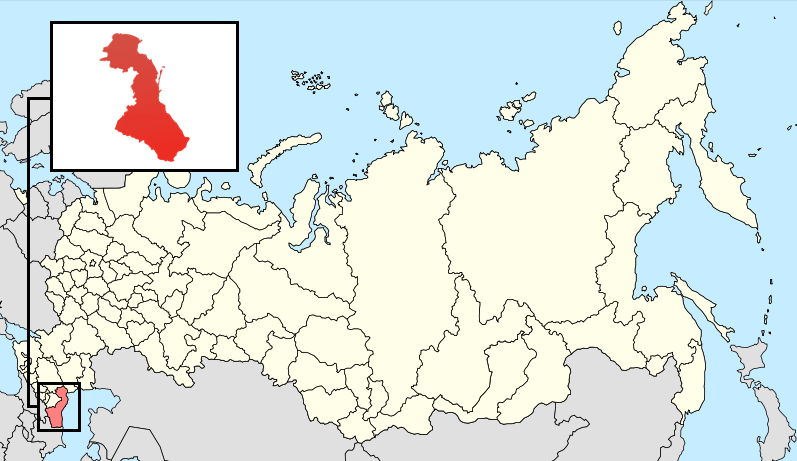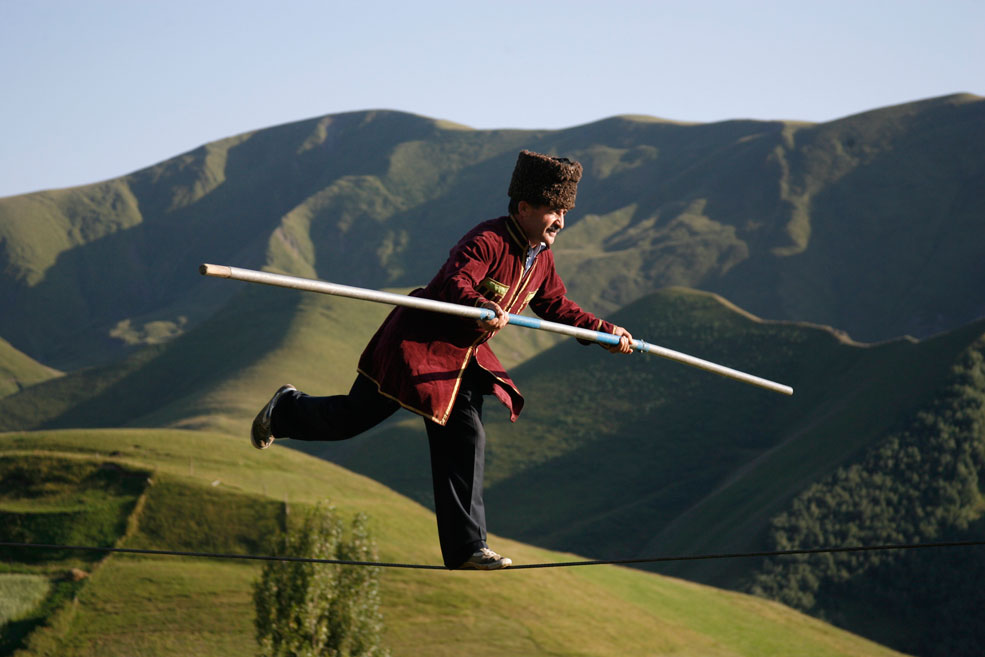A Barely-Balanced Economy

The map above, showing Russia, highlights the federal subject (similar to an American state) of Dagestan. Dagestan is home to just about three million people, including approximately 160,000 indigenous people known as the Laks. The Laks tend to congregate in the south central part of Dagestan, in a region that Wikipedia describes as “mountainous and very dry” and therefore not conducive to agriculture. While raising sheep and goats is not uncommon, many Lak subgroups have turned to various trades to fulfill their economic needs. Some are merchants, some are coppersmiths, and others are shoemakers. And typically, each Lak community contains a lot of people who ply one specific trade. Take, for example, the oddly-named hamlet of Tsovkra-1, where just about everyone is a tightrope walker.

See?
That photo is one of many from this profile of the village from The Week. (There are a lot of really excellent photos there — you should click that link when you get a chance.) The Week explains that the reason for this quirky tradition has unfortunately been lost to time, but in its place we have a nice myth: “More than 100 years ago, the village’s young men tired of trekking across the valleys that separated them from their female love interests in a neighboring community. So the men strung up a rope between the mountains and, after first pulling themselves across, eventually began to walk the rope, displaying their prowess for their waiting admirers.”
That seems unlikely to be the true origin of the tradition. Why? Because there’s evidence of people from Tsovkra-1 tightrope walking going even further back than 100 years ago — long before that, tightrope walking was the community’s major driver of employment. The Independent explains that in the early 1800s, residents of the hamlet “realized they were on to something that was not only a functional skill, but could also be marketed. Troupes of Tsovkra tightrope walkers began to tour neighboring villages, putting on shows of their skill and earning a few rubles for their efforts.” Over the course of the 150 or so years after, Tsovkra-1 residents were often able to find jobs in the circus — tightrope walkers have to come from somewhere, after all — and the tradition was passed down from generation to generation. Unfortunately, after World War II, that line of work began to dry up.
Regardless, the tradition has persevered. Currently, almost every one of Tsovkra-1’s able-bodied citizens — which now number about 400, down from 3,000 just twenty or thirty years ago — can walk the tightrope. A Reuters report notes that the people of Tsovkra-1 start at an early age; children as young as eight years old are walking a rope ten feet or so above the ground, and without a net, even if it isn’t a guarantee of employment. That may change, however: the tightrope school in Tsovkra-1 today is an unheated, two-room shack, per the Independent, struggling to stay open. Whether Tsovkra-1’s tradition lasts another generation is somewhat at risk, but hopefully, it will continue.
 Bonus Fact: Why is it called Tsovkra-1? There’s a hamlet near Tsovkra-1 which predates it which, itself, is called Tsovkra. The numeral 1 (with the dash) helps avoid ambiguity. It’s not a very creative solution, though.
Bonus Fact: Why is it called Tsovkra-1? There’s a hamlet near Tsovkra-1 which predates it which, itself, is called Tsovkra. The numeral 1 (with the dash) helps avoid ambiguity. It’s not a very creative solution, though.
From the Archives: Turning off Niagara Falls: The bonus fact is about a tightrope walker who crossed Niagara Falls. The main story is about how the Falls get turned off. Like a light switch, but a lot more complicated.
Related: A tightrope walking gyrobot.
